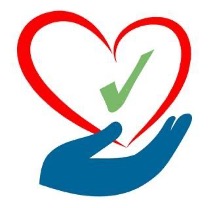Below is a list of Treatment skills/competencies that Lesley can demonstrate.
| ANATOMY, MOVEMENT AND PATHOLOGY |
| Competence 1: Lesley has an understanding of basic musculoskeletal structures, and normal movement patterns |
| 1. Can name and locate the main structures of the skeletal system: Skull, Vertebra, Ribs, Clavicles, Scapulae, Humerus, Radius & ulna, Metacarpals and phalanges, Pelvis, Femur, Tibia, Fibula, Metatarsals and phalanges 2. Can name and locate major muscle groups: Crurals, Quadriceps, Hamstrings, Gluteals, Hip abductors and adductors, Hip flexors, Triceps & biceps, Deltoids, Abdominals, Back extensors, Side flexors, Trunk rotators 3. Has knowledge of terminology and can demonstrate understanding of movement: Flexion & Extension, Abduction & Adduction, Circumduction (rotation) and elevation, Supination & Pronation, Dorsiflexion & Plantarflexion 4. Has knowledge of terminology and can demonstrate understanding of gait cycle: Swing & stance, Heel strike (initial contact), Foot flat, Mid stance, Heel rise, Toe off (terminal stance) |
| EXERCISE THEORY |
| Competence 2: Lesley has an understanding of the theory underpinning exercise. |
| 1. Understands different types of exercise: Strengthening, Stretching, Balance 2. Understands different ways of exercising: Active, Passive, Active assisted, Active resisted, Static, Concentric, Eccentric 3. Demonstrates a range of exercises from each category |
| TREATMENTS |
| Competence 3: Lesley can safely carry out treatments unsupervised in the client’s home |
| 1. Is aware of limitations, and conducts treatments prescribed by the qualified member of staff 2. Can perform effective basic strength exercises 3. Can perform effective basic stretches 4. Can demonstrate safe indoor mobility 5. Can demonstrate safe outdoor mobility |
| COGNITION |
| Competence 4: Lesley demonstrates a basic understanding of cognitive functioning |
| 1. Is able to confidently discuss the following cognitive impairments: Attention: (name the different types of attention) Memory (name 3 different types, describe basic storage model) Information processing Planning and organisation Initiation Problem solving Flexible thinking Insight and awareness 2. Understand the impact of the environmental set-up on cognitive functioning and functional performance 3. Demonstrate an understanding/awareness of the interactions between all cognitive functioning (ie. understand that they do not work in isolation) 4. Be able to explain the meaning of the term ‘Dysexecutive Syndrome’ 5. Has a basic awareness of cognitive assessments used by OTs and neuropsychologists 6. Has an understanding of what is meant by cognitive fatigue: is able to discuss the indicators that a client is becoming cognitive fatigued understands how to reduce the possibility of cognitive fatigue (eg. grading activities, using strategies to reduce cognitive load) 7. Demonstrates the ability to work competently to implement treatment strategies and structures as directed by the OT |
| PERCEPTION |
| Competence: 5 Lesley demonstrates a basic understanding of perceptual impairment |
| 1. Is able to discuss the following perceptual difficulties confidently: body schema agnosia spatial awareness neglect praxis topographical orientation 2. Has an understanding of the assessment tools that can be used to screen for perceptual difficulties 3. Is able to identify clinical indicators of a client experiencing perceptual difficulties 4. Demonstrates the ability to work competently to implement treatment strategies and structures as directed by the OT |
| FUNCTIONAL ASSESSMENT |
| Competence 6: Lesley is competent in basic functional assessments |
| 1. Understands the principles behind activity analysis 2. Is able to confidently discuss how a basic activity analysis/assessment is completed (eg. washing and dressing, eating and drinking, making a hot drink, making a basic snack) 3. Understands the variety of treatment approaches that may be utilised (eg. compensatory strategies, adapting tasks, equipment provision) |
| EQUIPMENT |
| Competence 7: Lesley is able to confidently and competently fit a variety of basic equipment aids in the client’s home |
| 1. Have a sound understanding of when a piece of equipment would/would not be issued 2. Understand procedure if a piece of equipment is faulty (NHS and private) 3. Able to competently monitor safety of equipment and complete annual checks |
| SPLINTING/CASTING |
| Competence 8: Lesley is confident and competent to monitor splints/casts |
| 1. Has understanding the basic principles of splinting and casting: when it is/is not recommended 2. Has seen a variety of different orthosis: off-the-shelf products static splints dynamic splints lycra garments 3. Is able to fit a splint or cast confidently 4. Understands the regime for monitoring splints/casts (eg. monitors vulnerable areas and recognises the signs of skin breakdown) 5. Understand the protocol/policy of how to address orthotics issues 6. Is confident in completing a basic therapeutic hand/foot massage 7. Is confident explaining the clinical reasoning for using a splint or cast to family or carers |
| LESIURE ACTIVITES |
| Competence 9: Lesley understands the importance of supporting clients in the community |
| 1. Has understanding of importance of gradual wean of clients into community activities 2. Has understanding of importance of grading activities specific to the client and assessing risk 3. Understand the importance of liaising with Senior if unsure. |
Other competencies are here
An associate member of the Chartered Society of Physiotherapy, I am proud to adhere to their standards and ethos.


Please use the drop down link for details of LDRehab Skillset and Competencies
